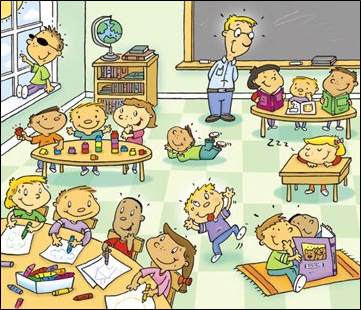Accommodations Versus Modifications

Accommodations
- Accommodations are changes to instructional or testing procedures or materials that allow a student to fully access the information and to accurately demonstrate knowledge.
In other words, accommodations:
- DO NOT change the content of instruction
- DO NOT change the expectations for learning
- DO NOT reduce the requirements of the task
Modifications
- Modifications are changes to instruction or curriculum that alters either the content of that instruction or student performance expectations.
In other words, modifications:
- DO change the expectations for learning
- DO reduce the requirements of the task
Do's and Don'ts When Selecting Accommodations
Do's
- Do...make accommodation decisions based on individualized needs
- Do...select accommodations that reduce the effect of the disability to access instruction and demonstrate learning
- Do...be certain to document instructional and assessment accommodations in the IEP or 504
- Do...be specific about the "where" "when" "who" and "how" of providing accommodations
- Do...evaluate accommodations used by the student
- Do...select accommodations based on specific individual needs in each content area
Don'ts
- Don't...make accommodation decisions based on whatever is "easiest" to do (e.g., preferential seating)
- Don't...select accommodations that are unrelated to documented student learning needs or are intended to give students an unfair advantage
- Don't...assume all instructional accommodations are appropriate for use on assessments
- Don't...check every accommodation possible on a checklist simply to be "safe"
- Don't...assume that the same accommodations remain appropriate year after year
-Don't...assume certain accommodations, such as extra time, are appropriate for every student in every content area
Examples of School Accommodations and Modifications

Textbooks and Curriculum
Books
- Provide alternative books with similar concepts, but at an easier reading level
- Provide audio access of textbooks and have the student follow the text while listening
- Provide summaries of chapters
- Provide reading material of interest to the student at or slightly above the student's reading level
- Give page numbers to help the student find answers
Curriculum
- Shorten assignments to focus on mastery of key concepts
- Specify and list exactly what the student will need to learn to pass
- Modify expectations based on student needs (e.g., "When you read this chapter, you should be able to list three reasons for the Civil War.")
- Give alternatives to long written reports (e.g., write several short reports, give an oral report on a assigned topic)

Classroom Environment
- Develop individualized rules for the student
- Evaluate the classroom structure against the student's needs (flexible seating, firm limits, etc)
- Keep workspaces clear of unrelated materials
- Reduce visual distractions
- Use study carrels

Instruction and Assignments
Directions
- Use both oral and printed directions
- Give directions in small steps and in as few words as possible
- Number and sequence the steps in a task
- Have student repeat the directions
- Provide a model of the end product
Time/Transitions
- Alert student several minutes before a transition
- Provide additional time to complete a task
- Allow extra time to turn in homework without penalty
Handwriting
- Use worksheets that require minimal writing
- Use fill-in questions with space for a brief response rather than a short essay
- Provide a designated notetaker or photocopy of other student or teacher notes
- Provide a print copy of any assignments or directions written on the board
- Omit assignments that require copying, or allow the student to dictate/record answers
Grading
- Weigh daily work higher than tests for a student who performs poorly on tests
- Allow a student to rework missed problems for a better grade
- Average grades out when assignments are reworked, or grade on corrected work
Tests
- Go over directions orally
- Divide tests into small sections of similar questions or problems
- Allow the student to complete an independent project as an alternative to the test
- Provide possible answers for fill-in-the blank sections
- Provide the first letter of the missing word for fill-in-the blank
- Modify/Alter the language/vocabulary used for the assessment to assist with student understanding. For example, replace the word ancient with old.
Other
- Use post-it notes to mark assignments in books
- Break long-term assignments into small, sequential steps
- Provide study guides and study questions that directly relate to tests

Behavior
- Use nonverbal cues to remind the student of classroom rules
- Reward a forgetful student for remembering to bring pencils to class rather than punishing the failure to remember
- Minimize the use of punishment; provide positive as well as negative consequences
- Increase the frequency and immediacy of reinforcement
- Ignore behaviors that are not seriously disruptive
Reference: wrightslaw.com